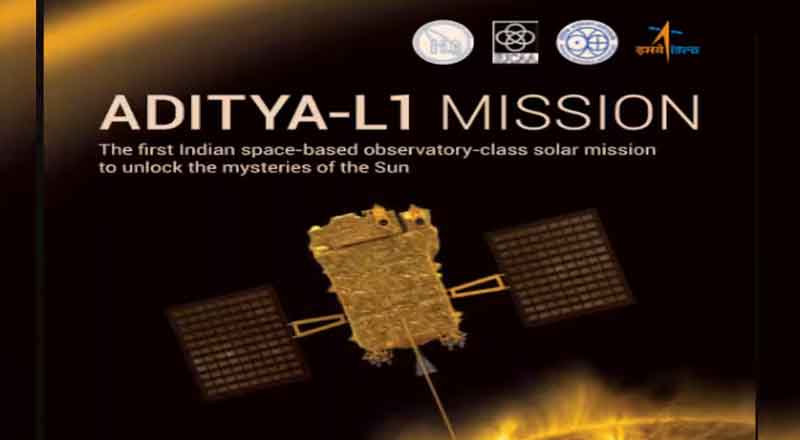- After the successful Chandrayaan-3 mission, ISRO announced the launch of the Aditya-L1 spacecraft to study the Sun.
- It will be the first dedicated Indian space mission for observations of the Sun.
- Initially, the spacecraft will be placed in a Low Earth Orbit.
- As the spacecraft travels towards L1, it will exit the Earth’s gravitational Sphere of Influence (SOI).
- The space agency shared a link for registration to view the programme from the Launch View Gallery.
After the successful Chandrayaan-3 mission, The Indian Space Research Organization (ISRO) on Monday announced that Aditya-L1- India’s first space-based observatory to study the Sun- will be launched on Saturday (September 2) at 11.50 a.m. from Andhra Pradesh Sriharikota.
Aditya-L1 spacecraft is designed to provide remote observations of the solar corona and in-situ observations of the solar wind at L1 (Sun-Earth Lagrangian point), which is about 1.5 million kilometres from the Earth.
The Aditya-L1 mission will be launched by ISRO’s PSLV XL rocket from Satish Dhawan Space Centre SHAR (SDSC-SHAR), Sriharikota. Initially, the spacecraft will be placed in a Low Earth Orbit. Subsequently, the orbit will be made more elliptical and later the spacecraft will be launched towards the Lagrange point (L1) by using onboard propulsion.
As the spacecraft travels towards L1, it will exit the Earth’s gravitational Sphere of Influence (SOI). After exit from SOI, the cruise phase will start and subsequently, the spacecraft will be injected into a large halo orbit around L1. The total travel time from launch to L1 would take about four months for Aditya-L1.
The major science objectives of Aditya-L1’s mission are:
- Study of Solar upper atmospheric (chromosphere and corona) dynamics.
- Study of chromospheric and coronal heating, physics of the partially ionized plasma, initiation of the coronal mass ejections, and flares
- Observe the in-situ particle and plasma environment providing data for the study of particle dynamics from the Sun.
- Physics of solar corona and its heating mechanism.
- Diagnostics of the coronal and coronal loops plasma: Temperature, velocity and density.
- Development, dynamics and origin of CMEs.
- Identify the sequence of processes that occur at multiple layers (chromosphere, base and extended corona) which eventually leads to solar eruptive events.
- Magnetic field topology and magnetic field measurements in the solar corona.
- Drivers for space weather (origin, composition and dynamics of solar wind.
(With inputs from agencies)





